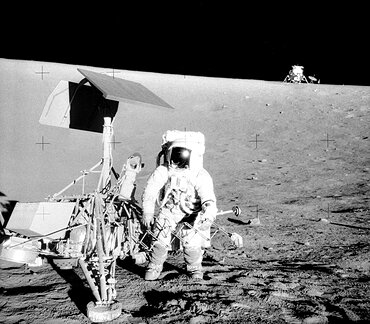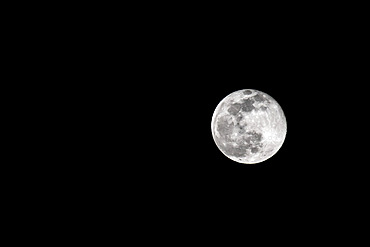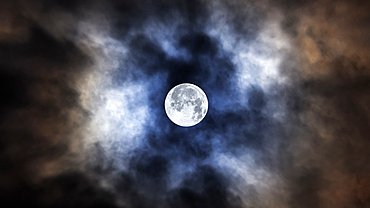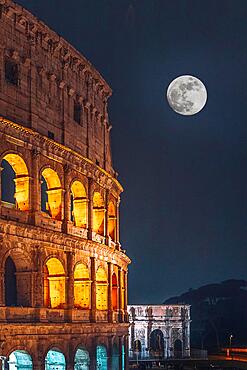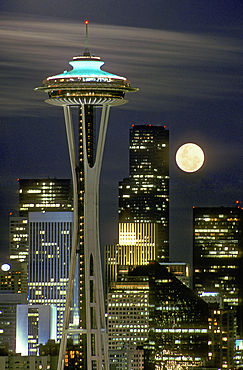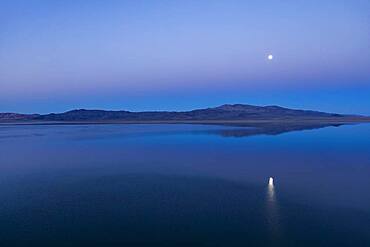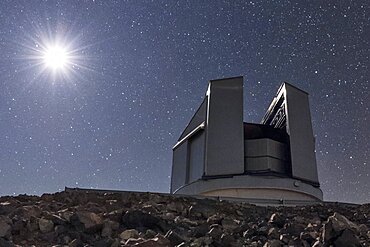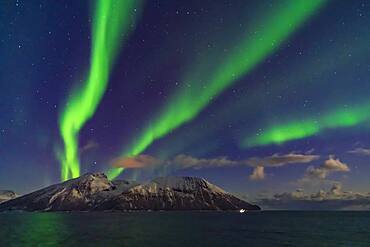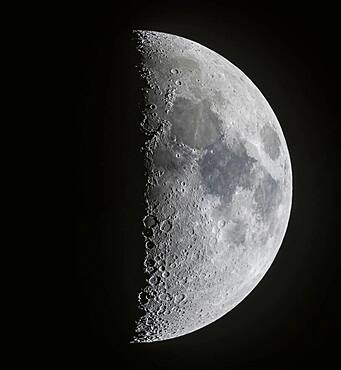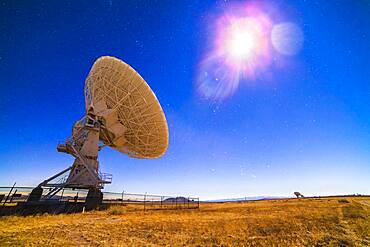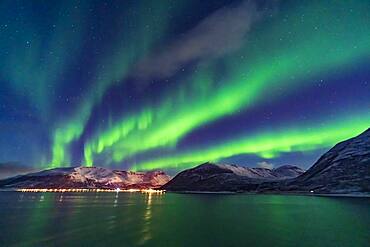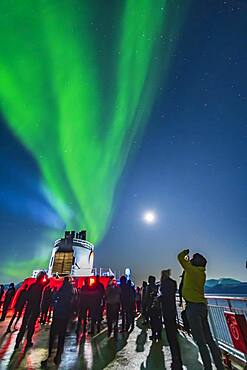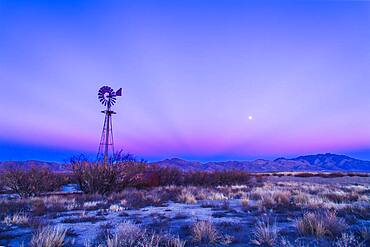Recent searches
Loading...
1112-6232 - Ice under a full moon in the Eduardo Avaroa Andean Fauna National Reserve, Potosi Department, Bolivia, South America
1112-6234 - Geysers under a full moon in the Eduardo Avaroa Andean Fauna National Reserve, Potosi Department, Bolivia, South America
1116-50694 - Sunset glow on snow dusted Chugach Mountains with fall coloured foliage, Crescent Moon appears over mountain. Chugach State Park, South-central Alaska in autumn; Anchorage, Alaska, United States of America
1116-52221 - A full moon rises at dusk over Queenstown's Lake Wakatipu; Queenstown, Otago, New Zealand
1116-51187 - The snow moon as it was rising in the sky in the evening. Image was taken out on a frozen lake in Minnesota. Another name for this full moon is the starving moon; Minnesota, United States of America
1113-106886 - People relax by the campfire under the full moon at Parks Canada Campground at Beveridge Locks on the Tay River with a docked Le Boat Horizon houseboat at night, near Lower Rideau Lake, Ontario, Canada, North America
832-393614 - The Colosseum illuminated at night, full moon, Rome, Italy, Europe
860-290229 - Solomons Temple, Buxton, UK. Solomons Temple lit by the moon in the Peak District, UK.
860-289890 - Siamese fighting fish (Betta splendens) 'Half Moon Fancy' on black background in aquarium
860-289892 - Siamese fighting fish (Betta splendens) 'Half Moon Koi' on black background in aquarium
860-289889 - Siamese fighting fish (Betta splendens) 'Half Moon Fancy' on black background in aquarium
860-289888 - Siamese fighting fish (Betta splendens) 'Half Moon Fancy' on black background in aquarium
1350-3008 - Entry sign at Craters of the Moon National Monument and Preserve, Idaho, USA.
1350-3519 - Sunrays illuminate a jellyfish, Mastigias sp., Jellyfish Lake, Kakaban Island, Berau, Kalimantan, Borneo, Indonesia, Pacific Ocean
1350-3375 - Heceta Head Lighthouse and full moon setting over ocean; Devils Elbow State Park, Oregon coast.
1350-3336 - Space Needle and full moon; Seattle, Washington.
1350-2973 - John Day River at LePage Park near Rufus, Oregon.
1350-3518 - Sunrays illuminate a jellyfish, Mastigias sp., Jellyfish Lake, Kakaban Island, Berau, Kalimantan, Borneo, Indonesia, Pacific Ocean
1350-3326 - Full moon rising over North Cascades from Park Butte Trail, Mount Baker-Snoqualmie National Forest, Washington.
1351-76 - View of the Rocca Albornoz and Spoleto Cathedral at night, Spoleto, Umbria, Italy, Europe
1179-5345 - Moonlight over the old town of Agios Nikolaos and lake at dusk, Lasithi prefecture, Crete, Greek Islands, Greece, Europe
1178-35214 - Airplane leaving contrails against blue sky with waning moon
1178-33477 - Silhouette of rowing team practicing on still lake
1178-34950 - Illuminated colonnade, domes and tower at night
832-392363 - Moon at sunset at Lake Taupo, Waikato, North Island, New Zealand, Oceania
832-392425 - Moon at sunset at Lake Taupo, Waikato, North Island, New Zealand, Oceania
832-392526 - Fullmoon in the black sky, Devon, England, United Kingdom, Europe
832-392976 - Full moon behind the monastery Chrisopigi on Sifnos, Cyclades, Greece, Europe
832-392140 - Full moon, North Rhine-Westphalia, Germany, Europe
832-392426 - Moon at sunset at Lake Taupo, Waikato, North Island, New Zealand, Oceania
1178-32062 - USA, Nevada, Hawthorne, Calm Walker Lake reflecting Moon at dusk
1113-105421 - Fullmoon over Andechs monastery, Upper Bavaria, Germany
1349-738 - Jupiter Icy Moons Explorer JUICE mission, artwork
1349-1577 - International Space Station Crossing the Sky
1349-1592 - Total Solar Eclipse, Maluku Islands, March 2016
1349-744 - Jupiter Icy Moons Explorer JUICE mission, artwork
1349-971 - Saturn's North Pole, Hexagonal Jet Stream
1349-926 - Saturn's Moon, Titan, Circular Feature at Xanadu
832-391868 - Fullmoon in the black sky, Devon, England, United Kingdom, Europe
832-391337 - Full moon over summit of Oetztaler Wildspitze, Soelden, Oetztal, Tyrol, Austria, Europe
1350-80 - The Moon in total eclipse, on January 20, 2019, in a multiple exposure composite showing the Moon moving from right to left (west to east) through the Earth's umbral shadow.
1350-75 - A fine display of aurora in curtains across the north, October 19, 2019, observed from the upper Deck 9 of the ms Trollfjord on the southbound voyage north of Tromsø along the Norwegian coast. Illumination is partly from the waning gibbous Moon.
1350-77 - The Full Moon rising on December 22, 2018, the day after the winter solstice, in a perfectly clear sky and over the distant horizon to the northeast over the snow-covered prairie. Some cows are grazing at left! The top edge of the Moon has a green rim and the bottom edge a red rim, from atmospheric refraction. But it made for a Christmas-coloured Moon ornament on the horizon! The dark lunar mare and even the bright rays splashing from Tycho at bottom are visible.
1350-43 - The 13.7-day-old Moon (a day before Full) with the south polar region tipped toward us in a favourable libration for viewing the southern regions and features. This was April 6, 2020. The large crater, Bailly, is on the southern limb, better seen here than at most similar phases, due to the favourable southern libration.
1350-44 - The 13.7-day-old Moon (a day before Full) with the south polar region tipped toward us in a favourable libration for viewing the southern regions and features. This was April 6, 2020. The large crater, Bailly, is on the southern limb, better seen here than at most similar phases, due to the favourable southern libration.
1350-83 - A panorama of the 7-day-old first quarter Moon on March 13, 2019, showing the full disk and extent of incredible detail along the terminator, the dividing line between the day and night sides of the Moon where the Sun is rising as seen from the surface of the Moon. Note the tiny points of light at the centres of some of the craters (particularly Alphonsus and Arzachel below centre) in the Southern Highlands from sunlight just catching the central peaks of those craters. At top in the north the slash of the Alpine Valley is obvious as well as the curve of the Apennine Mountains.
1350-48 - The 6.5-day-old Moon (approximately) with the Lunar X (below centre) and V (above centre) formations well lit on the terminator. This phase has an incredible amount of detail and variety of features visible along the terminator.
1350-4 - 9-day-old gibbous Moon, taken April 23, 2010, with Astro-Physics 130mm apo refractor, plus 2x Barlow for f/12 and 1600mm focal length. Canon 7D camera at ISO 100. Seeing poor -- this was the sharpest of the lot.
1350-96 - The partial eclipse of the Sun, October 23, 2014, as seen from Jasper, Alberta, in this case shot through thin cloud but that makes for a more interesting photo than one in a clear sky. This is still shot through a mylar filter, on the front of a 66mm f/6 apo refractor using the Canon 60Da for 1/25 sec exposure at ISO 100. The colours are natural, with the mylar filter providing a neutral 'white light' image. With the Sun dimmed a lot by cloud, the longer exposure allowed picking up light and colours in the surrounding clouds.
1350-116 - This is Comet NEOWISE (C/2020 F3) over the Horseshoe Canyon formation near Drumheller, Alberta on the night iof July 10-11, 2020, taken about 2 a.m. MDT with the comet just past lower culmination with it circumpolar at this time. Warm light from the rising waning gibbous Moon provides the illumination. The comet's faint blue ion tail is just barely visible even in the moonlit sky and low altitude. The glow of summer perpetual twilight at latitude 51.5�8 N still colours the northern horizon despite this being close to the middle of the night.
1350-19 - Harvest Moon, Sept. 27, 2004, taken from near home. With Canon Digital Rebel 300D, with 20mm lens at f/13 and 1/2 sec exposure at ISO100. Minimal processing to increase contrast but Moon image is not a fake -- the balance between sky and Moon was perfect for recording Moon detail and ground without over or underexposing either.
1350-61 - The Celestron GPS8 scope looking at M22 in the Milky Way in the light of the rising waxing gibbous Moon, from the backyard July 21, 2019. Jupiter is bright at right, Saturn at left.
1350-97 - The partial eclipse of the Sun, October 23, 2014, as seen from Jasper, Alberta, shot under clear skies through a mylar filter, on the front of a 66mm f/6 apo refractor using the Canon 60Da for 1/8000 (!) sec exposure at ISO 100. The colours are natural, with the mylar filter providing a neutral 'white light' image. The big sunspot on the Sun that day is just disappearing behind the Moon's limb. The mylar filter gave a white Sun, its natural colour, but I have tinted the Sun's disk yellow for a more pleasing view that is not just white Sun/black sky.
1350-100 - A dim aurora to the north at Grasslands National Park, Saskatchewan, at the Larson Ranch site and its rustic pioneer cabins. Taken August 8, 2016. This is looking northeast to Andromeda (the Andromeda Galaxy is above centre) and Perseus (the Double Cluster is left of centre). This Park is a Dark Sky Preserve. There are no lights visible. Illumination here is from starlight and the setting waxing crescent Moon to the southwest.
1350-323 - Digital composite of Gray Wolf (Canis lupus) silhouette Grey Wolf howling at the full moon in Monument Valley, Arizona, USA.
1350-81 - The Moon in mid-total eclipse, on January 20, 2019, with it shining beside the Beehive star cluster, Messier 44, in Cancer. This was the unique sight at this eclipse as it can happen only during total lunar eclipses that occur in late January. There was one on January 31, 2018 but the next will not be until 2037.
1350-162 - The 7-day old First Quarter Moon on May 21, 2018.
1350-136 - A pair of campers watch the sunset with the 4-day-old waxing Moon in the twilight sky above, at Red Rock Coulee in southeast Alberta.
1350-84 - A mosaic of the 11-day-old gibbous Moon, on March 17, 2019, showing the full disk and extent of incredible detail along the terminator, the dividing line between the day and night sides of the Moon where the Sun is rising as seen from the surface of the Moon.
1350-176 - The Dark Emu of aboriginal sky lore rising in a moonlit sky over the Tasman Sea from a beach near Lakes Entrance, Victoria, Australia, April 2, 2017. Lights from fishing boats dot the horizon out at sea. Illumination is from the waxing crescent Moon behind the camera to the north. This is looking southeast. Crux, the Southern Cross, is at top; the Pointer Stars are below.
1350-41 - One of the 27 antennas of the Very Large Array (VLA) radio telescope complex in New Mexico (with others in the distance at lower right) illuminated by moonlight, on December 13, 2013, peak night for the Geminid meteor shower. A single exposure of 30 seconds with the Rokinon 14mm lens at f/2.8 and Canon 5D MkII at ISO 800. Orion is rising a lower centre. The Moon is the bright object at upper right. The Pleiades and Hyades are above centre.
1350-46 - The 6.5-day-old Moon (approximately) with the Lunar X (below centre) and V (above centre) formations well lit on the terminator. This phase has an incredible amount of detail and variety of features visible along the terminator.
1350-124 - A composite of the August 21, 2017 total solar eclipse assembled using the HDR program Photomatix Pro v6.
1350-76 - A fine display of aurora in curtains across the north, October 19, 2019, observed from the upper Deck 9 of the ms Trollfjord on the southbound voyage north of Tromsø along the Norwegian coast. Illumination is partly from the waning gibbous Moon.
1350-74 - Passengers observing and shooting the Northern Lights from the upper Deck 9 of the ms Trollfjord on the northbound voyage, Oct 16, 2019, north of Tromsø. Illumination is from the waning gibbous Moon in frame at right.
1350-113 - A superb display of aurora borealis seen on March 14, 2016 when it reached Level 5 storm levels. Here it begins in the evening twilight and in the light of the 6-day-old Moon. Jupiter is at right. This view is looking east.
1350-86 - The eroding formations of Dinosaur Provincial Park, Alberta, lit by the rising gibbous Moon, off camera at right, on April 21/22, 2019. This is looking north, with the stars of the northern sky pivoting around Polaris.
1350-85 - The 4-day-old waxing crescent Moon (more like the 3.5-day Moon) on April 8, 2019 exposed for just the bright sunlit crescent, revealing details along the terminator.
1350-26 - Sunset twilight colours and the waxing gibbous Moon over the Chiricahua Mountains in southeast Arizona, south of Willcox. Taken December 15, 2013 on Highway 186. Taken with the 24mm lens and Canon 5D MkII. Some dark crepuscular rays are visible converging to the anti-solar point.
1350-125 - The waning gibbous Moon approaches the star Aldebaran at an occultation on the morning of September 12, 2017. This is a multiple exposure composite of the ingress phase that occurred before sunrise, with the Moon from the final exposure and the star from exposures taken at 4-minute intervals prior to that last exposure. For the actual ingress I switched to HD movie to shoot a video of the event.
1350-73 - Exiting the narrow Trollfjord by searchlight and under moonlight, on the northbound voyage of the Hurtigruten ferry ship the ms Trollfjord, on October 15, 2019. Capella is at top; Betelgeuse and Orion are rising at centre at the mouth of the fjord; Aldebaran is partly in cloud left of the Moon.
1350-112 - Sunset colours over Deadhorse Lake in southern Alberta, on July 8, 2016. The waxing crescent Moon shines amid the colourful clouds.
1350-37 - Total eclipse of the Moon, December 20/21, 2010, taken from home with 130mm AP apo refractor at f/6 and Canon 7D at ISO 400. An HDR composite of 9 images from 1/125 second to 2 seconds, composited in Photoshop CS5. Vibrancy increased to show bring out the colour variations across the shadow and at the edge of the shadow. Taken at about 12:21 am MST on Dec 21, about 20 minutes before totality began, during the partial phase.
1350-174 - The waxing crescent Moon setting over a nearby farm, on June 26, 2017. Shot at the start of a time-lapse sequence, and shot in haste from home as the Moon appeared from beneath an otherwise very cloudy sky. The dark side of the Moon is lit by Earthshine, prominent despite the Moon's low altitude and bright twilight sky.
1350-57 - Orion and the winter stars and constellations rising in the light of a first quarter Moon on December 3, 2019. The vertical format sweeps up the Milky Way.
1350-153 - The rising of the Full Moon on Easter eve, Saturday, March 31, 2018, on a very cold night with lots of snow still on the ground in Alberta. So this is more a winter Moon than a spring one. This is the 'paschal' Moon ' the one that defines the date of Easter, being the first Full Moon after the vernal equinox. The first Sunday after that Full Moon, in this case the next day, is Easter Sunday.


